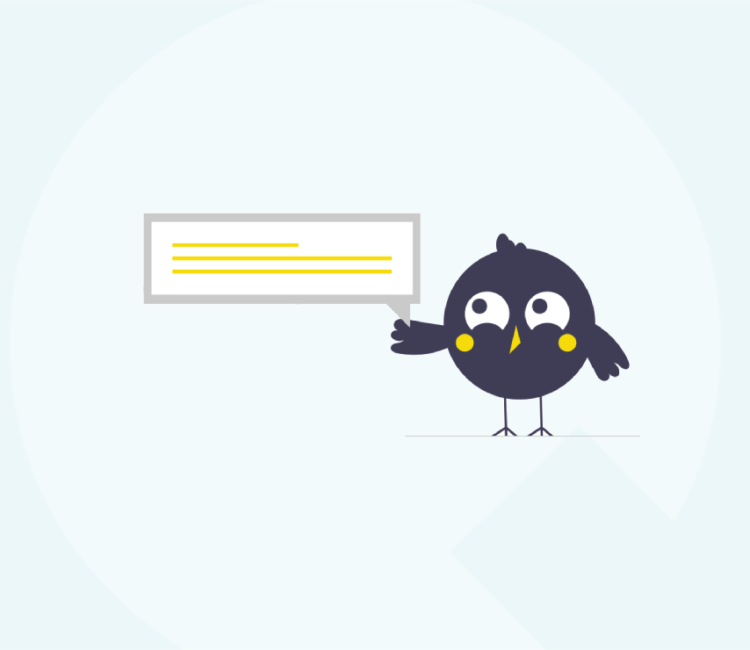Designing internal emails for employee engagement can be a challenge. How can you make an engaging email? What steps are necessary to get employees to respond back?
Your employees get hundreds of emails a day and you need to find a way to stand out and get others to notice your email if you want to make them more engaged.
Before you start to send out emails to those on your team, make sure that you are doing it the right way.
Emails are a crucial link between your company and your employees, so you need to find ways to engage the employees to help them feel like part of the time.
How do you make the important information from your company stand out amongst all the other emails your employees receive? The best email design can make this happen.
Let’s take a closer look at some of the ways you can design the perfect email to engage your employees and ensure they get the right information at the right time.
Personalise your emails
Sending out a mass email to everyone is a bad idea. It can set you up to get sent straight to spam. At the very least, your employees will barely glance at the email and will choose to spend their time a different way.
A subject line that is enticing is one of the best ways to pique your employees interest and get them to take a look inside. There are different ways to do this:

Keep the subject line short
Keeping the subject line short and catchy is the best option. Anything too long looks spammy. Some of the reasons to go with a short subject line includes:
- Mobile devices will only have a small amount of space for subject lines. Keep it small.
- Subject lines no more than 10 words have the best open rates.
- Longer subject lines may reveal too much information without the employee needing to open the email.
The subject line is the first thing your employees will see. Think it through well to make sure you can grab their attention and avoid getting put in the trash folder online.
Make it personal
Making the email personal can help engage with your employee. Start by using their name in the subject line and body copy. This is a simple thing to do that helps the employee feel like they matter, rather than just another person who gets the same email as everyone else.
You can do this even if you plan to send the same email to hundreds of employees. There are tools available to help you insert personalised text in the email without having to manually do all the work.
Use a template builder
A template builder can be a good option no matter how many emails you decide to send out. You can personalise it to your business and then use that template to fill in any information you would like along the way.
There are different options out there, but an html email template builder will give you the most freedom and control. You can easily change up the parts to have your business in mind, while helping you to make changes later if you would like.
Find a template that you can use for a long time. This makes it easier to maintain consistency throughout each email that you send out in the future. With an html email template builder, it is easier to make adjustments to the text, images, and more, even adding in your email signature with logo if you like, so the email template will look exactly the way you want.
Show more, tell less
Building internal emails that are visually appealing may seem daunting, especially when you compare all of the different email services. The end result is often worth it. Using a short video or a good infographic instead of text will save a lot of space and can present the message in an appealing way.
Multimedia is one of the best ways to communicate complex information. Your employees would much rather watch a few minute video rather than read through large chunks of text on email, especially if the use their mobile phones.
If you can share the information in a graphic or through a video rather than text, this is a better option to choose.
Check your work
Nothing is worse than making a great email and then have trouble due to sending errors. Something as simple as a bad hyperlink or a broken image is enough to cause problems when you send out an HTML email.
Many of the email template builders you will use provide email previewers to help. They give you a chance to look over the email for any big issues that may make it hard to send the email. Use this tool to help make the right emails that will stand out for your employees.

Image: Pexels
Trust the data
If you plan to continue sending out emails to your employees, then you need to look at the numbers. Find out what your employees think about the emails ahead of time. You may love how they turn out, but you are not the target audience and if your employees do not like the emails, then it is time to go back to the drawing board.
It is possible to collect data about the email preferences of your employees, both quantitative and qualitative, with these internal communications. Many email templates you use can provide the data you need on how employees are engaging your emails. You can use this data to help improve your emails in the future.
Quantitative data
You can start by looking at the quantitative data available for your emails. This will look at how the employees are interacting with the emails and how much quality they think is found in the emails. You may want to look at this to see heat mapping, email engagement analytics, and whether the layout you choose is right.
This quantitative will help you make important decisions about the emails as time goes on. You may find that trying out a different template is a better way to interact with your employees. Even the time of day you send out the emails will matter too.
Qualitative tracking
While there are some benefits to quantitative data, like knowing how many emails are opened from employees, this will only show you a small amount of the email engagement situation. You need to go a bit further with some qualitative tracking to see the full picture.
Giving your employees a way to respond is a good place to start. Send out surveys, allow them to leave feedback anonymously, add emoji reactions to the end of the email, and allow them to RSVP to events that you plan to host. This can help you see a bit more of how they react to your emails.
Add only important information
Be careful about the type of information that you add to the email. It is easy to get long winded and add too much information to an email, more than what your employees need. Emails need to be kept short and to the point, rather than rambling on.
You may need to go through a few drafts of your email to make it perfect. Start by writing down everything that you need to say. Keep a bullet point list nearby to help you not miss out on an important point.
Once the email is done, you can go through and cross out the items that do not need to be there anymore. If you went off topic, cross that out. If you have extra words or something that should be in a separate email, keep those out for now too. Short and sweet is the best option here.
Keeping it short for mobile devices
Only keep the important information in your emails. Many of your employees will see your correspondence on their mobile devices. Long emails on a small screen can get cumbersome and annoying. Many of your employees will just choose not to look at the email at all.
A short email will help to get the message across while making it easier for your employees to read through it all. Keep the paragraphs short, at just a few lines each, to make the chunks of reading a little more manageable as well. This is good for both mobile devices and even computers and can improve readability.
In Summary
Creating emails that will engage your employees will take a few tries to accomplish. Keep in mind that your employees are getting a lot of emails each day. They have to keep up with personal emails, work emails, and spam.
Using the tips above will help you engage with your employees and share the information that you think is important with them. These tips help you from being spammy, shares relevant information, and can help you get more involvement from your employees.
About the Author
Andrian Valeanu is a web designer and indie maker. His interests include but not limited to information technologies, web design, and email marketing



